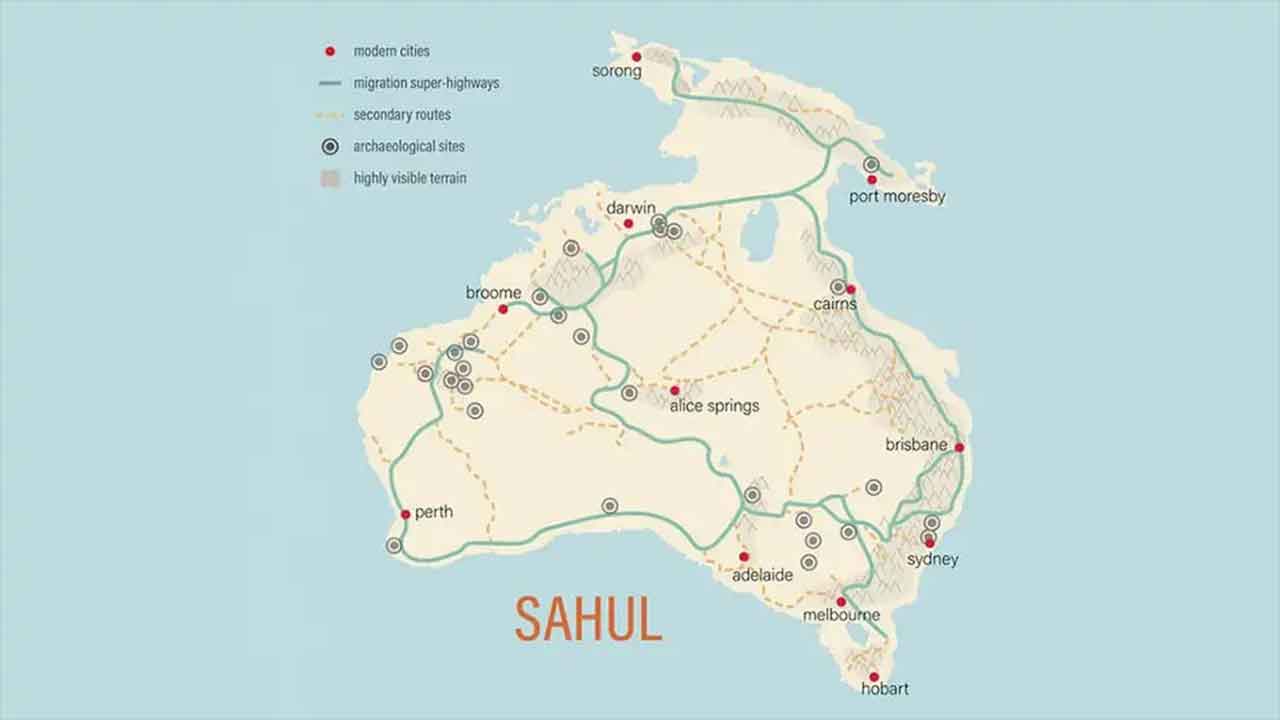Modelling the ‘superhighways’ travelled by First Australians

Indigenous Australians have long pointed out that their ancestors have lived on and cared for this continent since time immemorial. Hampered by entrenched misconceptions and outdated curricula, it’s only in recent decades – with discoveries like Mungo Man and Mungo Lady – that science has started to catch up.
A new study by the ARC Centre of Excellence for Australian Biodiversity and Heritage (CABAH) has attempted to map the peopling of Australia by using a simulation model. The model ran more than 120 scenarios to predict population sizes and growth rates on the mega-continent of Sahul, which joined Australia and New Guinea before sea levels rose.
Because archaeological evidence of human arrival into Sahul is rare, the research team used real-world data about long-distance dispersal of people, human survival, fertility rates and the chance of natural disasters, in combination with anthropological, ecological and environmental data to build the model.
Their findings have been published in two companion papers in Nature Communications and Nature Human Behaviour.
Credit: CABAH
The scenario with the strongest support suggested that people arrived between 50,000 and 75,000 years ago, and that the population of Sahul may have reached up to 6.5 million.
In order to clarify the pathways the First Australians took across the continent, the team – comprising archaeologists, anthropologists, geographers, ecologists, geneticists, geologists and computer scientists – built the most complete digital elevation model ever constructed for Australia, including areas now underwater.
The model allowed the researchers to build a picture of what these early people would have seen, such as prominent land features in a relatively flat landscape.
“If it’s a new landscape and we don’t have a map, we’re going to want to know how to move efficiently throughout a space, where to find water, and where to camp — and we’ll orient ourselves based on high points around the lands,” explains lead author, archaeologist and computational social scientist Stefani Crabtree from Utah State University, US.
The team tested more than 125 billion possible pathways using computational analysis, comparing those pathways with the oldest known archaeological sites on the continent.
The patterns that emerged suggest there were distinct ‘superhighways’ across the landscape, as well as tributaries of secondary, lesser-travelled routes. Several of the superhighways echo documented Aboriginal trade routes that transect the country, including the trade of pituri (native tobacco) from Cape York to South Australia via Birdsville.
“In many Aboriginal societies, landscape features are believed to have been created by ancestral beings during the Dreaming,” says CABAH deputy director Sean Ulm from James Cook University. “Every ridgeline, hill, river, beach and water source is named, storied and inscribed into the very fabric of societies, emphasising the intimate relationship between people and place.
“The landscape is literally woven into peoples’ lives and their histories. It seems that these relationships between people and Country probably date back to the earliest peopling of the continent.”
The researchers suggest that in the future, the model could be used to map other epic migrations, such as the first waves of migration out of Africa – or to forecast future movements of human populations due to climate disruptions and sea-level rise.
This article was originally published on Cosmos Magazine and was written by Amalyah Hart. Amalyah Hart is a science journalist based in Melbourne. She has a BA (Hons) in Archaeology and Anthropology from the University of Oxford and an MA in Journalism from the University of Melbourne.
Image: Megan Hotchkiss Davidson/Sandia National Laboratories, Zoe Taylor, CABAH
